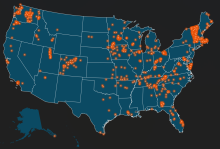Vermont's Community-Driven Broadband for All - Episode 606 of the Community Broadband Bits Podcast

In this episode of the podcast, Chris and Ry engage in an insightful discussion with Ellie de Villiers, Executive Director of Maple Broadband in Vermont. They explore the unique Communications Union District (CUD) model that Vermont has adopted to bridge the broadband infrastructure gap, especially in underserved areas.
Ellie shares her personal connection to Vermont and describes the local lifestyle before diving into the history and structure of Maple Broadband. The conversation highlights the strategic partnership between Maple Broadband and Waitsfield and Champlain Valley Telecom (WCVT), detailing how this collaboration aims to enhance broadband access in Addison County.
The episode also delves into the impact of the COVID-19 pandemic on broadband needs, the challenges of building infrastructure in rural areas, and the importance of community involvement. Ellie explains the phases of construction, the funding mechanisms, and the hurdles they faced, such as make-ready work and pole attachment issues.
The discussion wraps up with a look at future plans, including potential uses of BEAD funding and the ongoing evolution of Maple Broadband's strategy to provide high-quality, affordable internet to its community.
This show is 42 minutes long and can be played on this page or via Apple Podcasts or the tool of your choice using this feed.
Transcript below.
We want your feedback and suggestions for the show-please e-mail us or leave a comment below.
Listen to other episodes or view all episodes in our index. See other podcasts from the Institute for Local Self-Reliance.
Thanks to Arne Huseby for the music. The song is Warm Duck Shuffle and is licensed under a Creative Commons Attribution (3.0) license



